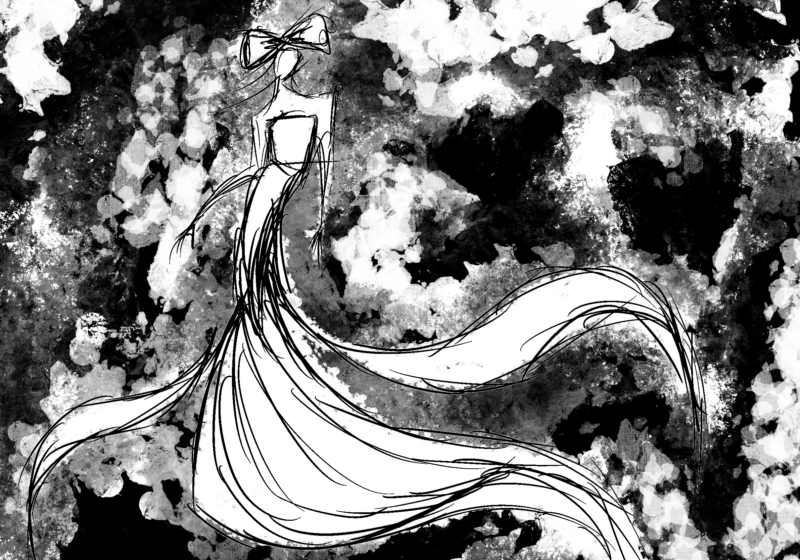Juxtaposition, ambiguity, tasteful restraint — words that come to mind when thinking of the collections presented around two months ago during Paris Fashion Week. At its most basal, the contrast of the conventional and unconventional; of the new, young, and old.
Taking place in the world’s fashion capital, Paris Fashion Week features several dozen of the most prestigious designer brands, who present their coming collections in the form of exorbitant fashion shows. Complete with meticulously curated guest lists and set details down to the seating and music choice, few things are as representative of the stark inaccessibility of the ultra-rich lifestyle, the grandeur only amplified by the price points — each garment featured in this twice-yearly extravaganza is priced anywhere between thousands to tens of thousands of dollars each. And, arguably, not without good reason, as each piece is hand-made-to-order, and the culmination of countless hours of skilled design and careful craftsmanship.
Certainly, far more people tune into these shows than those who can afford to purchase anything on display, which begs the question — to the average person, what is the value in viewing such a wildly inaccessible spectacle? At first glance, it might seem like a futile attempt to vicariously experience the realm of wealth that permits the luxe lifestyle of high fashion clientele. More charitably, perhaps, a chance to enjoy the fantasy of bejeweled gowns and tailored perfection.
But, I’d argue, these interpretations fundamentally misunderstand the value we can derive from haute couture.
A long estranged aspect of the mainstream fashion space, haute couture allows us a glimpse of creativity when it is unrestrained — at the very least, less so — by the stifling constraints of the current fashion economy, which must follow, co-opt, and bastardize trends in alignment with the general public to maintain profitability. The crux of high fashion, and what makes it worth watching, is its contrastive lack of limitation in a space so delineated by its own struggle for profit. Indeed, it is by virtue of its monetarily privileged position and cultural legacy that haute couture enjoys a certain creative freedom, permitting a drift from palatability into novelty. At its very best, high fashion challenges its very medium, emphasizing the arbitrariness of fashion convention and pushing the boundaries of dress.
Take Dutch fashion designer Iris Van Herpen, whose creations — often constructed with cascades of geometric, repetitive layers, or billowing wings of fabric — effortlessly meld with the body. Among her past few collections was “Architectonics,” which took inspiration from oceanic color palettes and habitats, featuring wavelike and fluidly sculptural pieces that celebrate their connection to the human form. As for examples from this recent season, Spring/Summer 2025 (SS25), Issey Miyake SS25 introduced a clean, introspective collection revolving around paper — not just in the composition of the garments themselves, of which many were constructed using blends of hemp, but encapsulated in their various forms. The presentation exudes a certain gentleness: delicate pressed-leaf and floral arrangements worn as eyewear, and widely present architectural draping, signature pleating, and elegantly twisted garments which embrace the natural qualities of their material. Sharing a similar tenderness, Valentino SS25 was a muted parade of bows, lace, and ruffles spilling from gowns — a visual convening of lightness, delicateness, and femininity. Despite completing their microtrend cycle now, there’s nothing outdated or kitsch about the frequent appearance of ribbons and bows in Alessandro Michele’s creations, reminding us of the unfortunate reality of the modern fashion economy: What should be timeless motifs are compartmentalized into specific substyles of fashion, subsequently accelerating their falling out of favor from the mainstream. But here, alongside many others this season, these designers keep alive a wonderful sense that we tend to lose in mainstream fashion — that the body is not just a mannequin, but an individualistic form deserving and capable of interacting dynamically and uniquely with its accessories.
Beyond offering a sort of visual freshness to the fashion space, high fashion introduces a heightened level of storytelling and intrinsic social commentary exceedingly rare in mainstream fashion. When the production of clothes hinges on promises of guaranteed financial gain, the result is the unsurprising constrainment of affordable fashion to uninspired spinoffs of current trends.
In fact, the fad of replicating a given subculture’s styling — see the grunge, “hippie,” or goth movements — with superficial regard for anything beyond visuals is partially the cause of their subsequent reduction from decades of cultural legacy to bare aesthetics. Not to say that high fashion exists in total isolation from the influence of said trends, but haute couture operates more predictively — the most successful high fashion ventures are those that introduce styles and pieces that remain timeless, or at least ever-returning to the fashion mainstream.
And to produce evergreen garments of this nature requires a fine-grained attunement with or conscious reading of social trends. Put simply, it requires the identification and harnessing of the social components driving the appeal of current trends instead of mindless reproduction of their form. It’s not the ribbons and bubble skirts, per se, but the reclaiming of hyper-feminine and playfulness in dress that has driven the commercial success of these motifs.
For example, we can attribute the mainstream recognition and success of brands like Miu Miu — sister brand of Italian fashion house Prada — in recent years to creative director Miuccia Prada’s remarkable attunement with Miu Miu’s freshly discovered essence: an intrinsic flexibility and sort of accessible effervescence. And what I mean by this is that the brand’s core playfulness feels inclusive, and intentionally so, in a way fashion trends often do not; despite Miu Miu remaining relatively true to the brand’s visual identity, which, in itself, is characterized by the juxtaposition of youth and maturity, the brand has been tactfully diverse in its choice of representation.
In addition to more typical vectors of fashion like superstar K-idol Jang Wonyoung and American actress Sydney Sweeney, who are often seen sporting Miu Miu apparel, the prolific actor Willem Dafoe and Dr. Qin Huilan — a 70-year-old Guanxi-born doctor by training and longtime Prada superfan — both walked Miu Miu’s recent show. And it’s this dichotomy that makes the brand identity of Miu Miu a force to be reckoned with within the modern fashion sphere; the oscillating nature of today’s accelerated fashion cycles, combined with the continued personification of dress — think the bookish yet sexily powerful “office siren,” the demure “coquette,” etc. — lends an intense appeal to brands that successfully harness this subconscious indecisiveness to be everything all at once. As Miuccia Prada herself has written about the “Miu Miu girl,” “There is a strength, and a tenderness […] For instance, you can want to be beautiful and gentle but also intelligent, political.”
“There is a mentality which has always been present at Miu Miu — a sense of freedom, of spontaneity,” she wrote.
Bottega Veneta SS25 carried similar themes of social dichotomy and reflection, encapsulated by a collection revolving around the transition from childhood to corporate adulthood. Palpable was a certain awkwardness intrinsic to the process of growing up, with too-big blazers with heavily accented shoulders, intentionally frumpy dress-shirts, and tastefully messy, asymmetric skirts and pants.
Here, Matthieu Blazy’s tender carefulness to each component of a look is extraordinarily clear. Entire ensembles deceptively constructed with leather, including details like ties and striped dress-shirts, exemplify perhaps what is the most cherished and distinct aspect of high fashion: a careful attention to detail and passion for expert craftsmanship. Clearly, a perfunctory glance or once-over is not enough for Blazy. Each look, instead, can be dissected and appreciated, down to the crocheted leather flowers that drip from the hands of the models. And this in itself is precious: that there even exists something beyond a superficial glance or two is increasingly rare within the context of a wider fashion space, where a closer look too often only begets the discovery of design carelessness or economic corner-cutting.
Though high fashion certainly exists in a setting more opportune for artistic innovation, lazily repackaged brand motifs and shock value-based ploys for attention are certainly still present in high fashion. For example, I personally can’t see any potential longevity or cultural value Balenciaga’s $2,000 trash bag purse brings to the table. All is to say that though a small group, the people who regularly consume luxury fashion are loyal, and brands know it. Bringing freshness to how we dress is not secluded to high fashion by any means, but it’s a fact that the most accessible fashion — think SHEIN and other fast fashion brands — tend to regurgitate cheap copies of what is already mainstream, naturally pushing consumers toward falling into line with current trends. High fashion is fascinating because it’s a paradox of sorts — wildly inaccessible in a practical sense, yet reminding us of the arbitrariness of fashion convention and how simple and accessible stylistic reinvention can potentially be. Indeed, we might not be able to readily purchase garments that themselves embody reinvention and innovation — this necessarily requires time and craftsmanship, which the fashion industry at large generally lacks — but we can all learn something from the founding principles of high fashion: to be experimental and individualistic in the ways we view and style ourselves.




